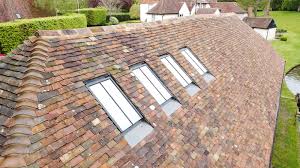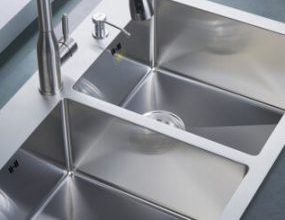Introduction:
Conservation rooflights are architectural wonders that illuminate the past, present, and future of heritage buildings. These carefully designed windows serve a dual purpose: to let in natural light, thus enhancing the interior spaces of historic structures, while preserving the authentic appearance of the building’s exterior. In this article, we’ll explore the fascinating world of conservation rooflights, their role in heritage preservation, and the numerous benefits they bring to both architectural heritage and modern design.
1. The Essence of Conservation Rooflights:
Conservation rooflights, sometimes referred to as heritage rooflights, are a product of careful engineering and design. They are intended to allow natural light to flow into historic and heritage buildings without compromising their original aesthetics. The primary objective is to create a harmonious blend of the old and the new, where contemporary materials and energy-efficient technology meet traditional architecture.
2. Preservation of Heritage and Historical Significance:
One of the primary purposes of conservation rooflights is to ensure that heritage and historically significant buildings maintain their character and appearance. Heritage structures often boast unique architectural features and designs that hold cultural and historical significance. These buildings serve as time capsules, and conservation rooflights play a vital role in preserving their authenticity.
3. The Multitude of Benefits:
Conservation rooflights offer numerous advantages, including:
- Amplified Natural Light: They flood interior spaces with an abundance of natural light, creating a welcoming and inviting environment.
- Energy Efficiency: Many modern conservation rooflights are designed with energy efficiency in mind, utilizing advanced glazing materials to reduce heat loss and energy consumption.
- Ventilation Options: Some conservation rooflights are equipped with ventilation features, allowing for natural airflow and improved indoor air quality. This can reduce the need for mechanical cooling.
- Seamless Aesthetic Integration: Conservation rooflights come in various styles and materials, ensuring they blend seamlessly with the existing architecture without clashing with the building’s overall design.
4. Types of Conservation Rooflights:
Various types of conservation rooflights are available to suit different architectural needs:
- Flush-Glazed Rooflights: These rooflights sit flush with the surrounding roofing materials, creating a seamless and unobtrusive appearance.
- Slimline Rooflights: Characterized by minimalistic framing, these designs maximize the amount of natural light that enters the building.
- Thermally Efficient Rooflights: They incorporate advanced glazing and insulation materials to enhance energy efficiency and minimize heat loss.
- Opening Rooflights: Some conservation rooflights can be opened to provide not only light but also natural ventilation, which contributes to improved indoor air quality and reduced cooling costs.
5. Sustainability and Conservation:
Conservation rooflights play a pivotal role in sustainable design by reducing the reliance on artificial lighting during daylight hours. By harnessing natural light, they contribute to energy conservation and a decrease in electricity consumption. Additionally, modern conservation rooflights are engineered to minimize heat loss, which further enhances energy efficiency.
6. Regulatory Compliance:
Heritage and historic buildings are frequently subject to stringent regulations and preservation guidelines. Conservation rooflights are designed with a keen eye on these requirements, ensuring that they adhere to historical preservation standards while providing contemporary performance.
7. Installation and Maintenance:
Proper installation of conservation rooflights should be conducted by professionals well-versed in heritage preservation and architectural design. Regular maintenance is essential to ensure the longevity and performance of these rooflights, including routine cleaning, resealing, and potential glazing replacement.
Conclusion:
Conservation rooflights stand as a testament to the seamless integration of heritage preservation and sustainability. They offer historic buildings a gift of natural light, enriching their interior spaces while respecting their historical value. Additionally, they contribute to energy efficiency and a reduced environmental footprint, aligning perfectly with the increasing importance of sustainable design and construction. Conservation rooflights are more than just architectural features; they are ambassadors of the past, present, and future, casting their radiant glow upon the pages of history and design.
Check out Rainclear Systems for more information.




